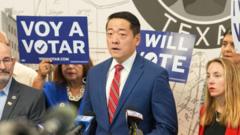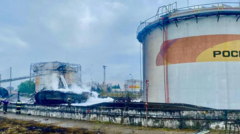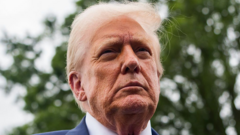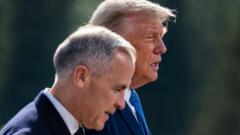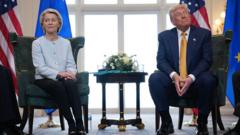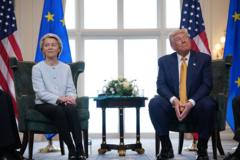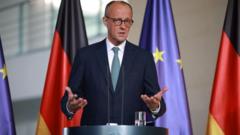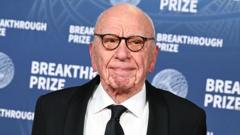While President Trump touts a significant surge in business investments, analysis reveals that many claims may be overstated or based on prior commitments.**
The Truth Behind Trump's Investment Claims: Analyzing the Numbers**
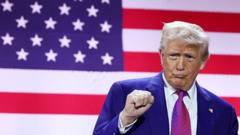
The Truth Behind Trump's Investment Claims: Analyzing the Numbers**
Investigating the veracity of President Trump's assertions about business investments made during his tenure.**
The reality behind Trump's incredible investment claims has captivated economic discussions since he took office. President Donald Trump has proclaimed that over $12 trillion (£8.8tn) of business investment has been "practically committed" during his administration, attributing this monumental figure to a mix of tariffs, tax cuts, and deregulation. If accurate, this number would far surpass last year's approximately $4 trillion in gross private investment, signaling a potential economic renaissance.
However, economic analysts caution against taking these claims at face value. There is insufficient data to assess the president's assertions fully. The U.S. government only releases business investment statistics on a quarterly basis, meaning definitive evaluations are still developing. Data from the first quarter of this year reflected some notable increases in business investment; however, economists like Stanford's Nick Bloom suggest that these results may be skewed by prior circumstances, such as the effects of a Boeing strike.
Skepticism arises with investigations into specific announcements associated with Trump's pro-investment narrative. For instance, the Swiss pharmaceutical company Roche recently stated intentions to invest $50 billion in the U.S. over the next five years, yet much of this spending was preset before Trump assumed office. Moreover, concerning Trump's economic policies, Roche's executives have hinted at potential disruptions to their plans due to suggestions regarding drug pricing adjustments, reinforcing the uncertainty among businesses.
Trump often points to high-profile corporate pledges, such as those from Apple and Hyundai, as proof of his influence on investment trends. The White House maintains a record of these declarations, totalizing around $5.3 trillion at the beginning of June; yet, a closer look reveals that this figure includes several projects already in the pipeline before Trump's presidency. Additionally, a significant number of items listed as investment commitments fall outside the conventional definition of investments.
Goldman Sachs offers a sobering analysis that suggests actual new investments equate to roughly $134 billion, adjusted down to as little as $30 billion when risks attached to these announcements are taken into account. These figures place Trump's promises significantly below the dramatic headlines he promotes.
Amidst these findings, White House representatives have dismissed concerns, suggesting that the administration's strategies to foster economic growth are yielding results, supported by numerous firms attributing their investment decisions to Trump's policies. However, analysts have noted an economic environment characterized by uncertainty impeding substantial growth.
There's an understanding among economists, like Martin Chorzempa from the Peterson Institute, that firms have incentives to amplify their announced investment numbers, particularly when interceded by an administration aiming for swift economic gains. While it is true that Trump’s tariffs have stimulated strategic plans within various industries, those improvements seem restrained and are often accompanied by caution.
The focus on investment growth, despite policy risks, highlights a complicated landscape. With Trump's administration stirring the pot of economic competition, insights suggest an underlying issue regarding consolidated industry dynamics, where a few large firms hold sway and create barriers for new investment opportunities.
As policy changes unfold, many experts express concern over a potential deceleration in investment growth, echoing sentiments that while boosting U.S. investment is vital, Trump's methods may not sufficiently address the core challenges faced by different industries today.

